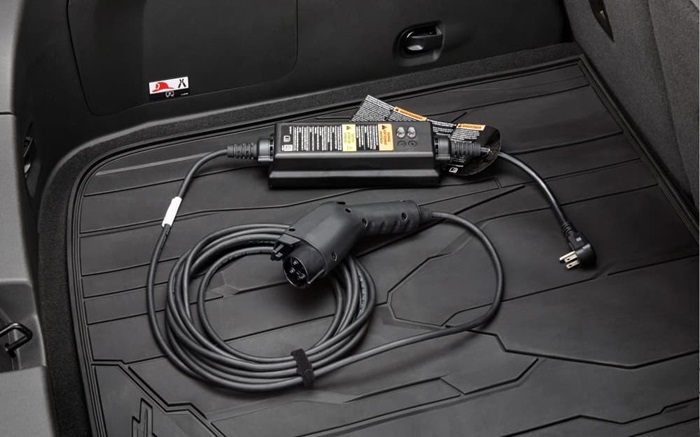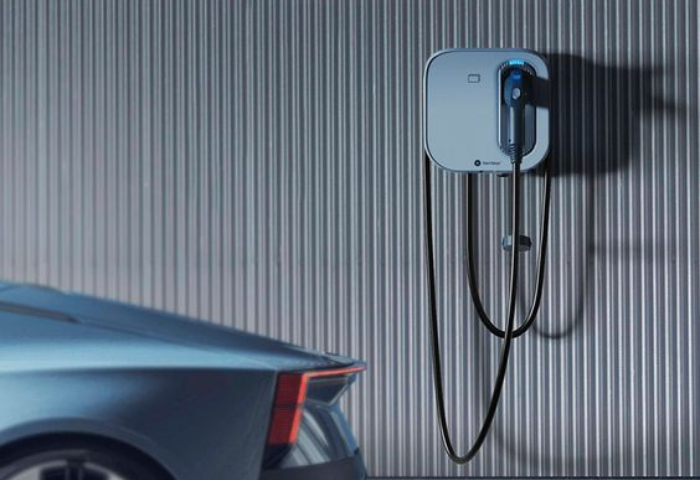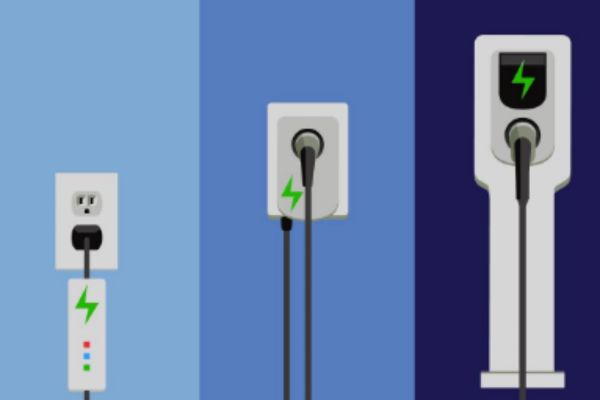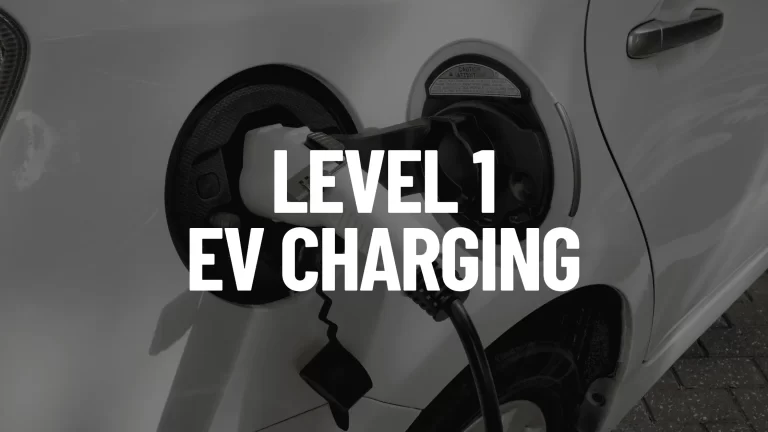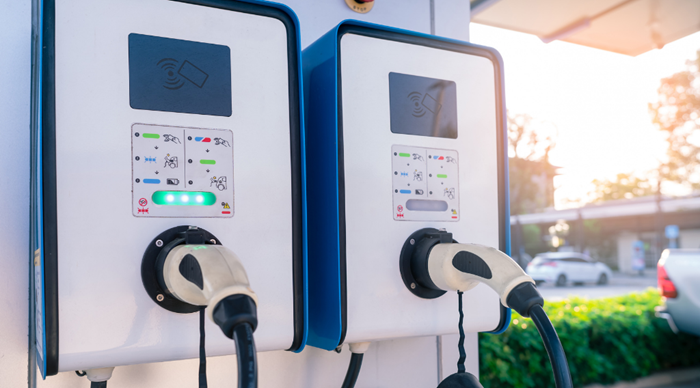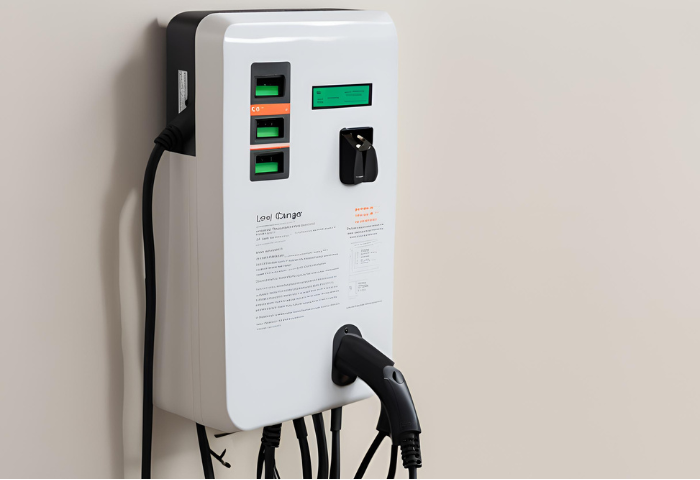Power Up Your EV Journey: The Benefits of Blink Charging Stations
Blink Charging is a leading provider of electric vehicle (EV) charging solutions, offering a network of charging stations across the United States. Their mission is to empower a greener future by making EV charging accessible and convenient for everyone.
Blink Charging provides a range of options to suit your needs, whether you are a business owner seeking charging options for your clients or a homeowner searching for a dependable home charger.
Blink Charging Network
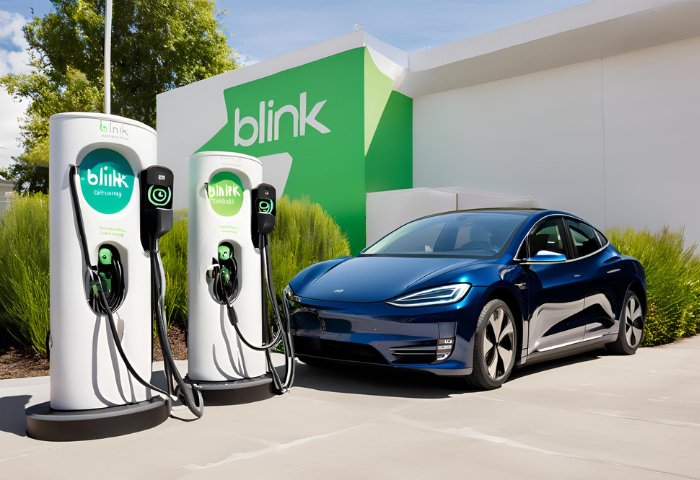
The Blink Charging Company manages a vast infrastructure of electric vehicle (EV) charging stations known as the Blink Charging Network. It spans across various locations nationwide, offering EV owners convenient access to charging facilities wherever they may be.
The network includes both Level 2 charging stations, suitable for home, workplace, and public installations, as well as DC fast chargers, providing rapid charging capabilities for longer journeys.
According to available data, Blink operates a significant number of charging stations across the United States, contributing to the widespread availability of EV charging infrastructure.
This extensive reach ensures that EV drivers have access to reliable charging options, promoting the adoption and use of electric vehicles as a sustainable transportation solution. For more detailed information, you can refer to “Your Guide to the Blink EV Charging Network” by U.S. News.
Blink Charging Solutions
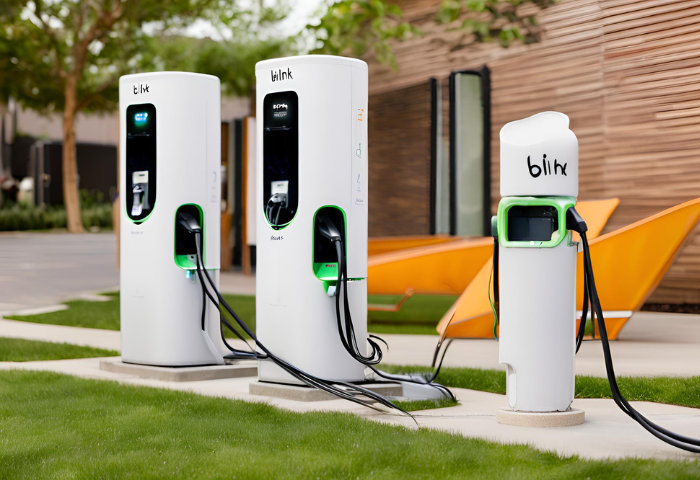
Blink Charging offers a comprehensive range of electric vehicle (EV) charging solutions designed to cater to various needs and environments. These solutions include:
Residential EV Chargers (Home Charging): Blink provides residential EV chargers tailored for home use, enabling EV owners to conveniently charge their vehicles in their own garage or driveway. These Level 2 chargers offer faster charging speeds compared to standard outlets, allowing for efficient overnight charging and ensuring that EVs are ready for use when needed.
Commercial EV Chargers (Businesses and Public Locations): Blink offers commercial EV chargers designed for businesses, workplaces, and public locations such as shopping centers, hotels, and parking facilities. These chargers provide a convenient charging solution for employees, customers, and visitors, supporting the growing demand for EV charging infrastructure in commercial settings.
DC Fast Chargers (Offering Rapid Charging): Blink’s DC fast chargers are designed to deliver rapid charging capabilities, enabling EV owners to quickly recharge their vehicles during longer journeys. These chargers are typically installed along highways, major roadways, and high-traffic areas, providing EV drivers with fast and convenient charging options to minimize downtime during travel.
Blink Charging Technology
| Charger Type | Maximum Power Output | Compatibility Standards |
| Level 2 Charger | 7.2 kW – 19.2 kW | J1772 |
| DC Fast Charger | 50 kW – 150 kW+ | CHAdeMO, CCS |
Blink Charging’s Level 2 chargers typically offer power outputs ranging from 7.2 kW to 19.2 kW, with compatibility using the J1772 connector standard. These chargers are suitable for residential, commercial, and public charging applications.
On the other hand, Blink’s DC Fast Chargers deliver higher power outputs, ranging from 50 kW to 150 kW or more. These chargers are compatible with different connector standards, including CHAdeMO and CCS, catering to various EV models and charging standards.
Using Blink Charging Stations
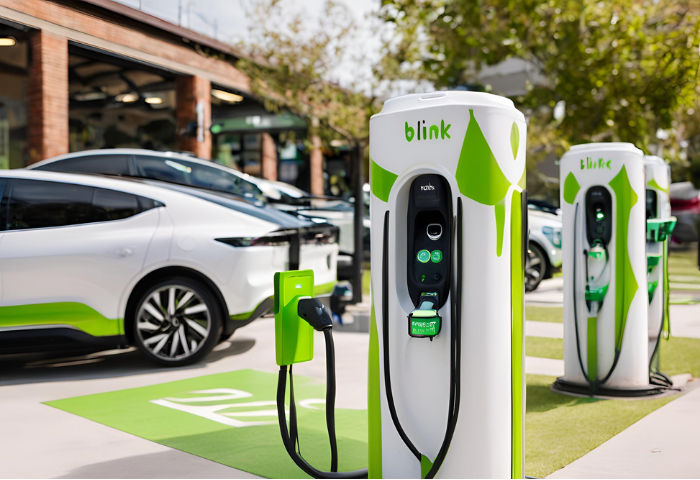
To find Blink charging stations, you can utilize various methods outlined in “Your Guide to the Blink EV Charging Network” by U.S. News:
Blink Mobile App: Download the Blink mobile app, which provides real-time information on the location, availability, and status of Blink charging stations. The app also allows users to start and stop charging sessions remotely and access account information.
Blink Website: Visit the Blink Charging website, where you can use the station locator tool to search for nearby charging stations based on location, amenities, and charger types. The website also provides information on charging station features and accessibility.
In-Vehicle Navigation Systems: Some electric vehicles come equipped with navigation systems that integrate charging station information, including Blink charging stations. Utilize the navigation system in your EV to locate nearby Blink chargers while on the road.
Once you’ve located a Blink charging station, the process of using it is generally straightforward, as outlined in “The Powerful Electric Vehicle Blink DC Fast Charger” by Transwest GMC Denver:
Initiating the Charging Session: Approach the Blink charging station and locate the charging port on your electric vehicle. Use the Blink mobile app or RFID card (if applicable) to initiate the charging session by tapping or scanning the station’s reader.
Plugging in the Connector: Once the charging session is initiated, remove the connector from the station’s holster and plug it into your electric vehicle’s charging port securely. Ensure that the connector is properly inserted to establish a connection.
Charging Session Progress: Monitor the progress of the charging session through the Blink mobile app or the station’s display, which typically indicates the charging status, time elapsed, and energy delivered.
Ending the Session: When the charging session is complete or you’re ready to disconnect, use the Blink mobile app or RFID card to stop the charging session. Unplug the connector from your electric vehicle and return it to the station’s holster.
Benefits of Using Blink

Using Blink charging stations offers several key advantages that cater to the needs of electric vehicle (EV) owners. Various sources and user experiences support these advantages:
Convenience and Wide Network Coverage: Blink’s commitment to making electric charging accessible for everyone translates into a wide network of charging stations across various locations. This extensive coverage ensures convenience for EV owners, whether they are at home, work, or on the road, as highlighted in Blink’s own messaging.
Faster Charging Options with DC Fast Chargers: Blink’s DC Fast Chargers provide rapid charging capabilities, allowing EV owners to recharge their vehicles quickly during longer journeys. This faster charging option minimizes downtime and enhances the practicality of electric vehicles, as noted in “The Powerful Electric Vehicle Blink DC Fast Charger” by Transwest GMC Denver.
Potential Cost Savings Compared to Gas Stations: While specific cost comparisons may vary depending on factors such as electricity rates and vehicle efficiency, using Blink charging stations can potentially offer cost savings compared to traditional gas stations. Charging an EV typically costs less per mile traveled compared to gasoline-powered vehicles, contributing to potential long-term savings for EV owners.
Blink Member Benefits (If Applicable): Blink may offer member benefits such as discounted charging rates, exclusive promotions, and access to premium features. These perks incentivize membership and reward loyal customers, enhancing the overall charging experience for Blink users, as mentioned in “The Powerful Electric Vehicle Blink DC Fast Charger” by Transwest GMC Denver.
Reliability of Blink Charging Stations: Blink charging stations are known for their reliability and uptime, ensuring that EV owners can rely on them for consistent and efficient charging experiences. This reliability contributes to the trustworthiness of Blink’s charging infrastructure and instills confidence in EV drivers.
Security Features Offered by Blink: Blink incorporates security features into its charging stations to protect user authentication and payment transactions. These features may include secure user authentication methods, encrypted payment processing, and adherence to industry standards for data security.
Blink and Sustainability
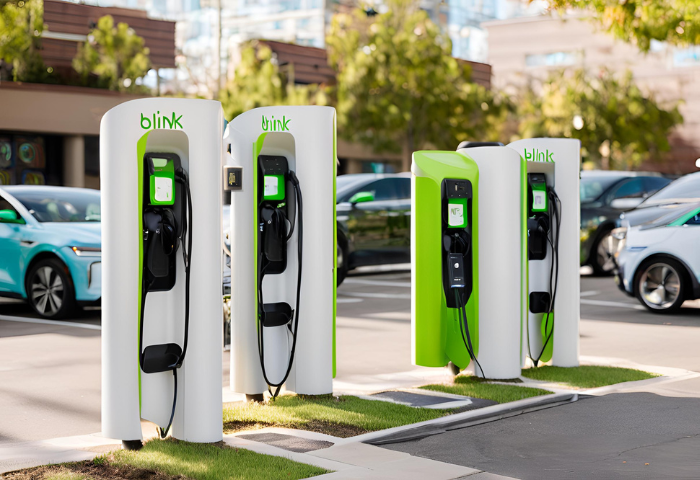
Using Blink EV chargers supports sustainability by:
Reducing reliance on fossil fuels: EVs powered by electricity contribute to lower emissions compared to internal combustion engine vehicles, especially when charged with renewable energy sources.
Decreasing air pollution: Electric vehicles produce zero tailpipe emissions, helping improve air quality and reduce the environmental impact of transportation.
Encouraging renewable energy adoption: Charging EVs with renewable energy sources such as solar or wind power further reduces carbon emissions and supports the transition to a cleaner energy future.
Blink in the News (Optional)
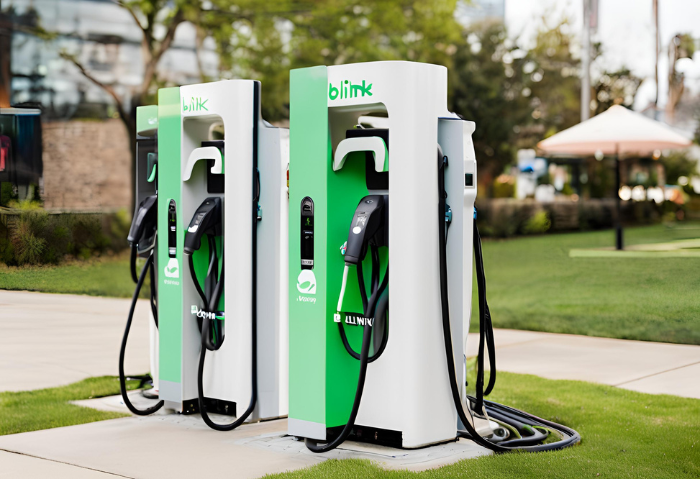
Network Expansion
“Blink Charging Expands Presence with New Station Locations Across [Region]” highlights Blink’s efforts to increase its charging network coverage in specific regions through the establishment of new charging stations.
“Blink Charging Announces Partnership with [Company] to Deploy Charging Infrastructure in [Location]” reports on strategic partnerships that enable Blink to expand its network presence and offer charging solutions in new locations or markets.
Technological Advancements
“Blink Charging Introduces Next-Generation EV Chargers with Enhanced Features” – Detailing the rollout of new charger models equipped with advanced features such as faster charging speeds, improved user interfaces, or enhanced connectivity options.
“Blink Charging Unveils Innovative Technology to Optimize Charging Efficiency and User Experience” – Highlighting technological innovations developed by Blink to enhance the performance, reliability, and user experience of its charging infrastructure.
Industry Recognition
“Blink Charging Receives Prestigious Award for Innovation in Sustainable Transportation” – Recognizing Blink’s achievements and contributions to the electric vehicle industry through awards and accolades from reputable organizations.
“Blink Charging Garners Positive Press Coverage for Sustainable Practices and Environmental Impact” – Showcasing positive media coverage and public recognition of Blink’s commitment to sustainability and environmental stewardship in the EV charging sector.
Customer Support
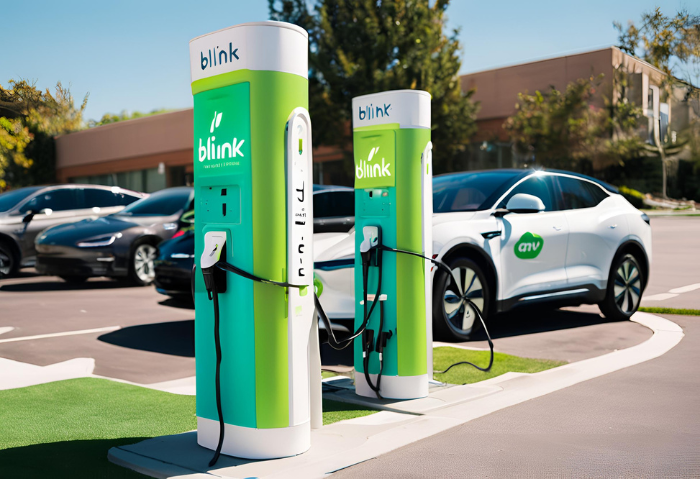
Blink offers various customer support options for troubleshooting or inquiries, as outlined on their website’s “Contact Us” page. These options typically include:
- Phone Support: Customers can reach Blink’s customer support team by phone during specified hours to receive assistance with troubleshooting, account inquiries, or general questions.
- Email Support: Users can also contact Blink’s customer support team via email to submit inquiries, report issues, or request assistance with specific issues related to EV charging.
- Online Contact Form: Blink provides an online contact form on their website, allowing customers to submit inquiries or requests for support conveniently. This form typically requires users to provide their contact information and details about their inquiry.
- FAQs and Help Center: Blink may offer an FAQ section or help center on their website, providing answers to common questions, troubleshooting tips, and guidance on using their charging infrastructure.
Relationships (Optional)
You can find information about Blink’s partnerships in the “News” section of their website, https://blinkcharging.com/.
Here are some potential areas where Blink might have established partnerships:
Businesses: Look for news about Blink partnering with retail stores, restaurants, hotels, or other businesses to install charging stations at their locations. This would increase charging availability and convenience for EV drivers.
- Municipalities and Government Agencies: Partnerships with cities, states, or government agencies could involve installing Blink charging stations in public parking areas, along highways, or at government facilities. This would support the development of public charging infrastructure.
- Real Estate Developers: Collaborations with real estate developers might involve integrating Blink charging stations into new residential or commercial buildings. This caters to the growing demand for EV charging options at home and workplaces.
Additional Resources
EV Charging Educational Resources:
- Department of Energy, Alternative Fuels Data Center
- Office of Energy Efficiency & Renewable Energy (Electric Vehicles)
- National Renewable Energy Laboratory (NREL)

Henry Michael is a leading expert in EV charging station research, specializing in innovative solutions for electric vehicle infrastructure. With a passion for sustainability and technological advancement, he is dedicated to advancing the accessibility and efficiency of EV charging worldwide.

